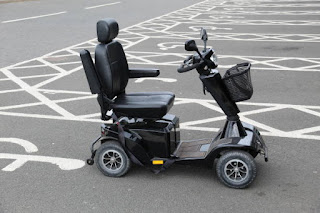Complete Guide for Choosing the Best Transport Chair
If you have trouble walking and require full-body assistance, a travel chair might be useful. However, buying one can often be perplexing, especially because of the huge number of transport chair and manual wheelchair options available on the market.
This article will assist you in determining whether a transport chair is the best alternative for you, and if so, how to select one that suits your specific requirements.
What is a transport chair?
Transport chairs, like wheelchairs, are mobility aids that support your entire body weight to ease discomfort and avoid injury. They are meant to be pushed by an attendant or partner and are more lightweight and portable. As a result, they are mostly utilized for brief periods of time, such as while traveling or conducting errands.
To summarize, travel chairs may be beneficial to persons who:
● Are unable to propel themselves?
● Have difficulty walking or are unable to walk
● Require a wheelchair on a part-time or short-term basis?
Considerations
● Size: To find the best size,: first, measure your backside's width when sitting on a flat surface. Add an inch or two to this measurement to ensure comfortable seating. This will give you a good idea of the size and seat width to look for.
Next, measure the narrowest passageway or doorway you will be using your transport chair in. You'll want the overall width of the chair you choose to be at least an inch or two less than this measurement so that you can safely and easily maneuver through the passageway.
● Weight capacity: To be utilized safely, your transfer chair must be able to hold your weight. The weight capacity of your transfer chair will often vary depending on the chair size. Most narrow seats can only sustain 200 pounds or less. Meanwhile, medium transport chairs can accommodate 200 to 300 pounds. Wider, heavier-duty transport seats may hold between 300 and 500 pounds. Always verify the weight capacity of a product before purchasing to ensure that it is safe for you.
● Weight: While most transport chairs are labeled as "lightweight," the actual overall weight varies from chair to chair. Standard transport chairs weigh approximately 20 pounds, while ultra-lightweight chairs can weigh as low as 15 pounds. Chairs with extra amenities can weigh up to 35 pounds. Because transfer chairs are meant to be a transportable alternative to wheelchairs, you should get one that is simple for you or your partner to lift when necessary.
● Wheel Size: Transport chairs always have smaller wheels than wheelchairs, however the size of the wheels might vary. Consider how frequently you will use your transfer chair outside or on difficult terrain. “A chair with bigger 12" wheels will be simpler to operate if you use it outdoors regularly. If you simply want to use your transfer chair indoors or on flat outdoor routes, a smaller with 8” wheels would be good.
● Travelling frequency: Consider how frequently you will be traveling with your transfer chair, whether by airline, rail, or automobile. If you plan on taking it with you outside the house on a frequent basis, portability is an important element to consider. You will, at the absolute least, require a travel chair that is readily folding. Chairs that can be folded to put into baggage or rapidly disassembled are also excellent travel solutions.
● Foldable: Most transport chairs on the market nowadays can fold, but you should double-check this before purchasing. Even if you don't intend to travel with it, having a folding transport chair that can be stowed out of the way while not in use might be handy. If you're frequently on the run, you should also consider how easily the chair folds.
● Material: Transport chairs are usually built from steel or aluminum. The best material for you will be determined by your budget and any modifications you require from your wheelchair.
● Leg rests: Leg rests are classified into two types: swing-away footrests and elevating leg rests. Because transport chairs are only used for brief periods of time, most include swing-away footrests. These footrests rotate to make getting into and out of the chair simpler. When in the chair, your legs remain in the same posture, with your knees gently bent. These may be detachable depending on the chair, and elevating leg rests may be available for purchase if necessary. Elevating leg rests allow you to adjust the angle of your legs to find the most comfortable posture.
Conclusion
As transport chairs cannot be pushed by themselves, they are typically not the ideal solution for persons who require full-body support all of the time and may not have somebody to propel them. Standard wheelchairs are a preferable alternative for those individuals.However, having a transfer chair in addition to a wheelchair can often be advantageous. This Transport wheelchairs provides an option that is simple to fold and lift while traveling or on a day out. If a transfer chair doesn’t sound right for you, consider checking out a folding power wheelchair in Canada or a mobility scooter in Canada.


.jpg)

Comments
Post a Comment